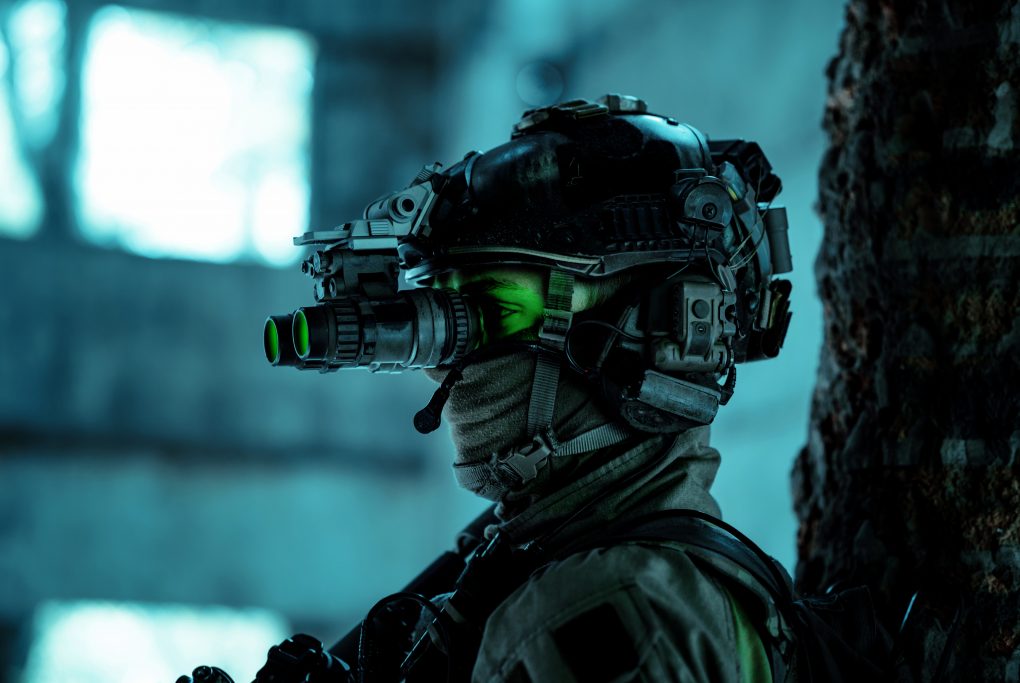Night vision goggles (NVGs) are essential tools for military personnel and civilians, allowing users to see in low-light or no-light conditions. But what exactly are dual tube NVGs, and how do they differ from single tube NVGs? In this article, we will explore the differences between these two types of NVGs, focusing on aspects such as field of view, depth perception, and binocular vision. We will also discuss the advantages of each type, and ultimately determine which is more effective for military and civilian use. So, let’s dive in and uncover the world of night vision technology.
What Are Dual Tube NVGs?
Dual Tube NVGs are advanced night vision devices that utilize two image intensifier tubes to provide a stereoscopic view. These devices offer enhanced depth perception and situational awareness, making them ideal for military and law enforcement applications.
One key benefit of dual-tube NVGs is their ability to provide a wider field of view compared to single-tube devices. This expanded field of view allows users to scan a larger area without moving their heads excessively, increasing operational efficiency and reducing the risk of missing critical details. The dual tube design enhances contrast, allowing for better target identification even in low-light conditions or environments with varying illumination levels.
What Are Single Tube NVGs?
Single-tube NVGs are night vision devices that utilize a single image intensifier tube to provide a monocular view. They are cost-effective, versatile, and suitable for various applications, including surveillance and thermal imaging.
One of the distinct features of single-tube NVGs is their lightweight and compact design, making them highly portable for various operations. Despite their relatively lower cost than dual-tube NVGs, these devices offer impressive performance in low-light conditions thanks to their efficient light-gathering capabilities.
The thermal optic technology integrated into these NVGs enhances their ability to detect heat signatures, providing valuable insights into security operations and search and rescue missions. Single-tube NVGs present a compelling option for individuals and organizations seeking reliable night vision solutions.
What Are the Differences Between Dual Tube and Single Tube NVGs?
Field of View: Night vision devices’ field of view determines the observable area, which is crucial for situational awareness and surveillance. It also enables effective monitoring and threat detection in low-light conditions.
Depth Perception: Dual-tube NVGs enhance the accurate perception of distance, which is essential for tasks like military operations. They offer better contrast and binocular vision, providing users with realistic environmental representation and improved judgment.
Binocular Vision: Dual-tube NVGs provide binocular vision, widening the field of view, aiding in threat detection, and enhancing spatial awareness for better decision-making in complex situations. This results in clearer visuals even in low-light environments.
Light Sensitivity: Night vision devices’ ability to amplify low light levels is critical for clear imaging in dark conditions. High light sensitivity enhances visibility, detecting hidden objects and providing clear visuals in low-light scenarios.
What Are the Advantages of Dual Tube NVGs?
Improved Depth Perception: Dual tube NVGs provide users with a stereoscopic view, enhancing depth perception and spatial awareness. They also improve contrast in low-light conditions for clearer object distinction, aiding in hazard identification and precise navigation.
Better Field of View: Dual tube NVGs offer a wider field of view, enhancing situational awareness, enabling quick threat detection, and enabling informed decision-making in dynamic scenarios. This ultimately improves operational effectiveness and safety.
Reduced Eye Strain: Dual tube NVGs minimize eye strain with a wider, more natural field of view, improved thermal management, and enhanced contrast perception, providing users with a comfortable viewing experience during prolonged use.
Enhanced Situational Awareness: Dual tube NVGs provide comprehensive environmental visibility, improving depth perception, depth of field, and thermal imaging capabilities for accurate threat assessment and informed decision-making in low-light or no-light conditions.
What Are the Advantages of Single Tube NVGs?
Lower Cost: Single-tube NVGs are affordable for users seeking night vision capabilities without the expense of dual-tube models. They offer budget-friendly options without compromising reliability, making them ideal for practical users who prioritize value and versatility.
Lighter Weight: Single-tube NVGs offer enhanced mobility and comfort with their lightweight design compared to dual-tube variants. This makes them prefer missions requiring agility and prolonged usage without discomfort. They are particularly favored by military and law enforcement professionals for their portability benefits.
Easier to Use: Single-tube NVGs provide simplicity and intuitive operation, requiring minimal training for users to adapt to varying light conditions. They offer wide fields of view for superior situational awareness and adjustable settings for versatility in surveillance or navigational tasks, ensuring accessibility for a wide range of applications.
Which Type of NVG Is More Effective?
The effectiveness of night vision goggles (NVGs) hinges on user needs and specific applications. Dual-tube NVGs excel in scenarios where enhanced depth perception and situational awareness are critical, while single-tube NVGs offer a more cost-effective and portable solution for general use. Dual tube NVGs provide a more immersive experience by mimicking binocular vision, enhancing judgment of distances in low-light conditions.
In military use, dual tube NVGs are preferred for their wider field of view, depth perception, and reduced eye strain during missions. In civilian settings, single-tube NVGs are popular for activities like hunting and camping due to their affordability, lightweight design, and versatility in low-light environments, including applications beyond recreation, like surveillance and search-and-rescue operations.
Conclusion
Night vision technology has evolved, presenting options from high-performance dual-tube NVGs to budget-friendly single-tube models. Dual-tube NVGs offer superior depth perception and wider fields of view, ideal for critical scenarios. Conversely, single-tube NVGs, being lightweight and affordable, suit applications prioritizing simplicity and compactness. The choice hinges on user needs and operational demands.


